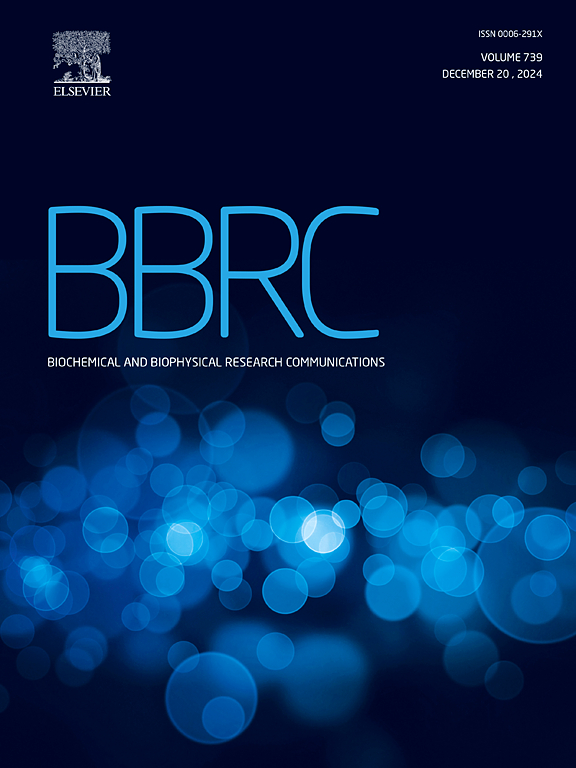癌细胞来源的细胞外囊泡的递送调节Barrett食管和十二指肠类器官的形态和基因表达(文章)
IF 2.5
3区 生物学
Q3 BIOCHEMISTRY & MOLECULAR BIOLOGY
Biochemical and biophysical research communications
Pub Date : 2025-05-08
DOI:10.1016/j.bbrc.2025.151976
引用次数: 0
摘要
细胞外囊泡(EVs)促进细胞间通讯,特别是在肿瘤细胞影响局部和远处细胞和组织的信号机制中。本研究调查了癌细胞来源的ev (cev)对患者来源的类器官的影响。共培养实验检测Barrett食管(BE)和十二指肠类器官的形态、生长、增殖和癌症相关基因/miRNA表达。我们的研究结果表明,cev促进类器官增殖,增加癌症相关mRNA/miRNA表达,并诱导表型改变。人工调节cev中的特异性肿瘤rna,如miR-21和miR-210,影响cev介导的共培养类器官生长效应。这些发现与良性类器官模型中ev介导的转化一致,为研究胃肠道肿瘤前/肿瘤条件和潜在的其他器官中ev相关的mirna /蛋白提供了有价值的工具。这为进一步研究癌细胞-微环境相互作用和EV在肿瘤发生/转移中的作用奠定了基础。本文章由计算机程序翻译,如有差异,请以英文原文为准。
Delivery of cancer cell-derived extracellular vesicles modulates the morphology and gene expression of Barrett esophagus and duodenal organoids (Article)
Extracellular vesicles (EVs) facilitate intercellular communication, especially in the signaling mechanisms employed by tumor cells to influence both local and distant cells and tissues. This study investigated the impact of cancer cell-derived EVs (CEVs) on patient-derived organoids. Co-culture experiments examined the morphology, growth, proliferation, and cancer-related gene/miRNA expression in Barrett's esophagus (BE) and duodenal organoids. Our results indicate that CEVs promoted organoid proliferation, increased cancer-related mRNA/miRNA expression, and induced phenotypic changes. Artificial modulation of specific oncomiRNAs in CEVs—such as miR-21 and miR-210, influenced CEV-mediated effects on co-cultured organoid growth. These findings align with EV-mediated transformations in benign organoid models, providing a valuable tool to study EV-associated miRNAs/proteins in gastrointestinal preneoplastic/neoplastic conditions and potentially other organs. This lays a foundation for future research on cancer cell-microenvironment interactions and EV roles in tumorigenesis/metastasis.
求助全文
通过发布文献求助,成功后即可免费获取论文全文。
去求助
来源期刊
CiteScore
6.10
自引率
0.00%
发文量
1400
审稿时长
14 days
期刊介绍:
Biochemical and Biophysical Research Communications is the premier international journal devoted to the very rapid dissemination of timely and significant experimental results in diverse fields of biological research. The development of the "Breakthroughs and Views" section brings the minireview format to the journal, and issues often contain collections of special interest manuscripts. BBRC is published weekly (52 issues/year).Research Areas now include: Biochemistry; biophysics; cell biology; developmental biology; immunology
; molecular biology; neurobiology; plant biology and proteomics

 求助内容:
求助内容: 应助结果提醒方式:
应助结果提醒方式:


